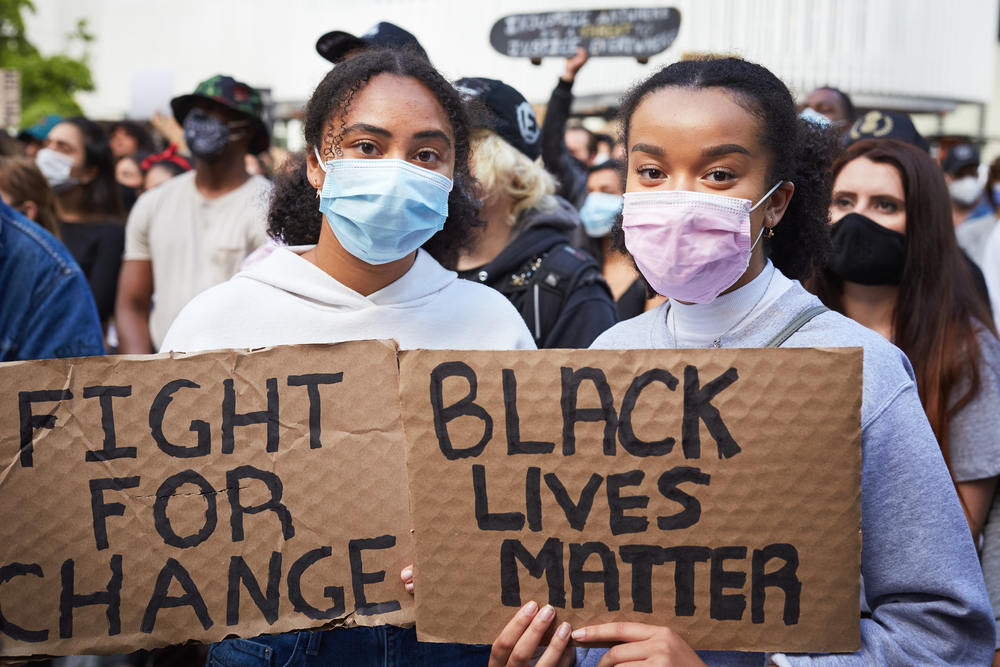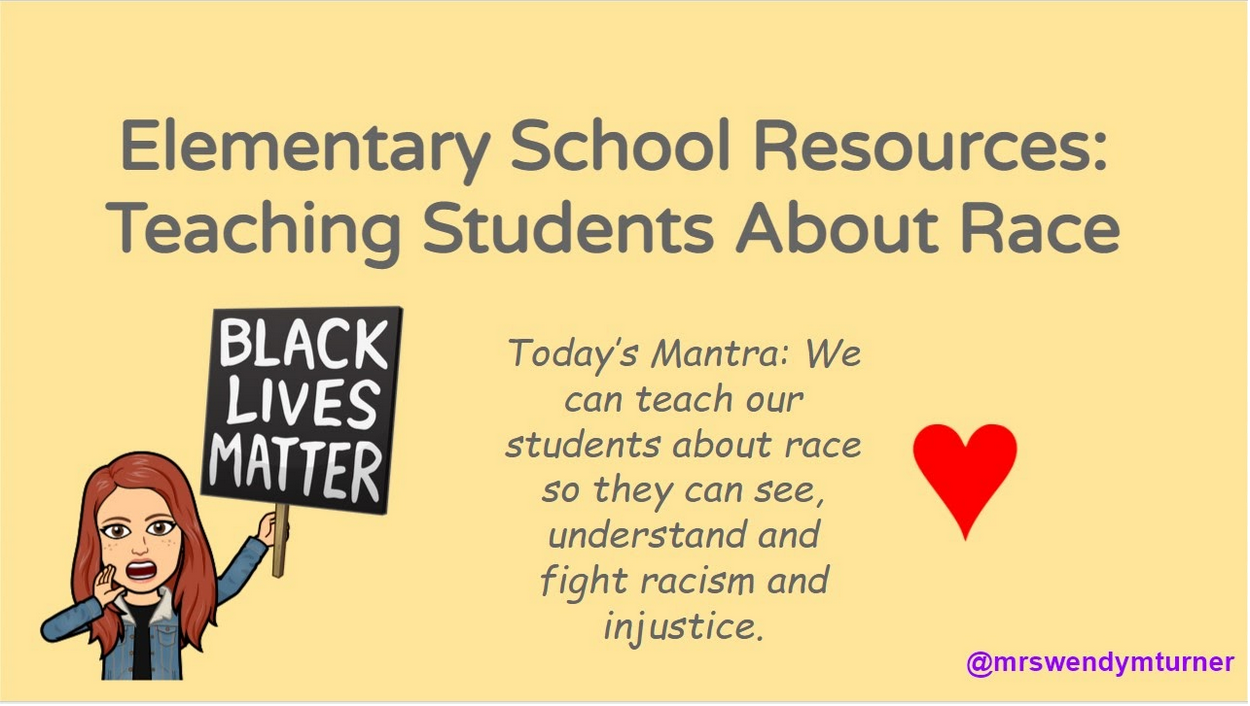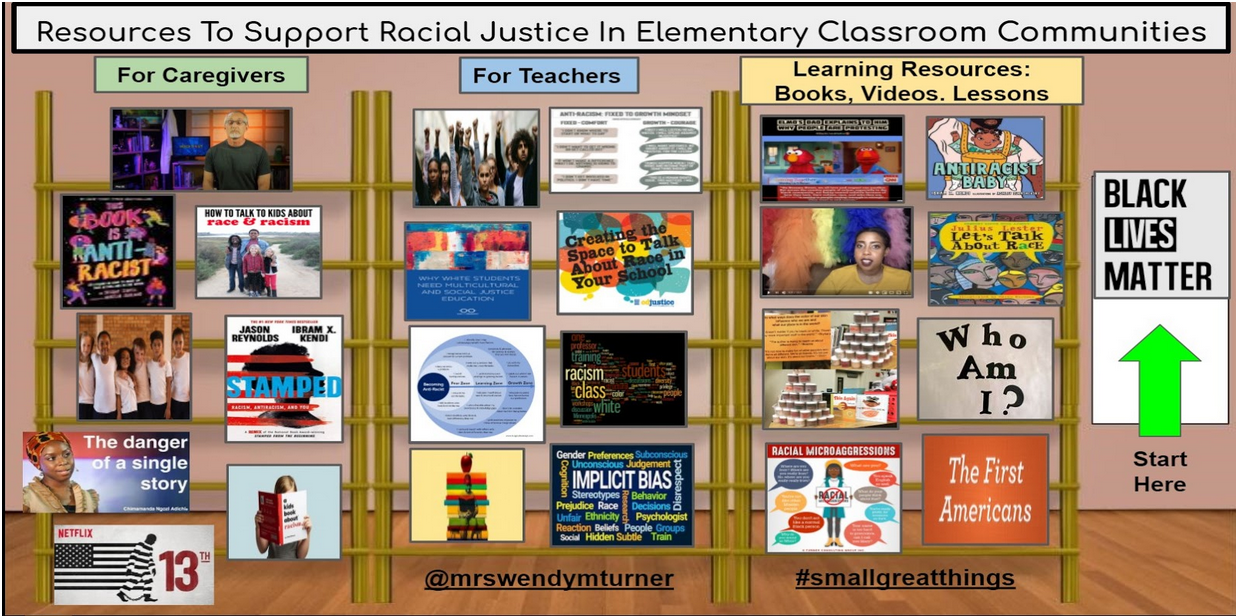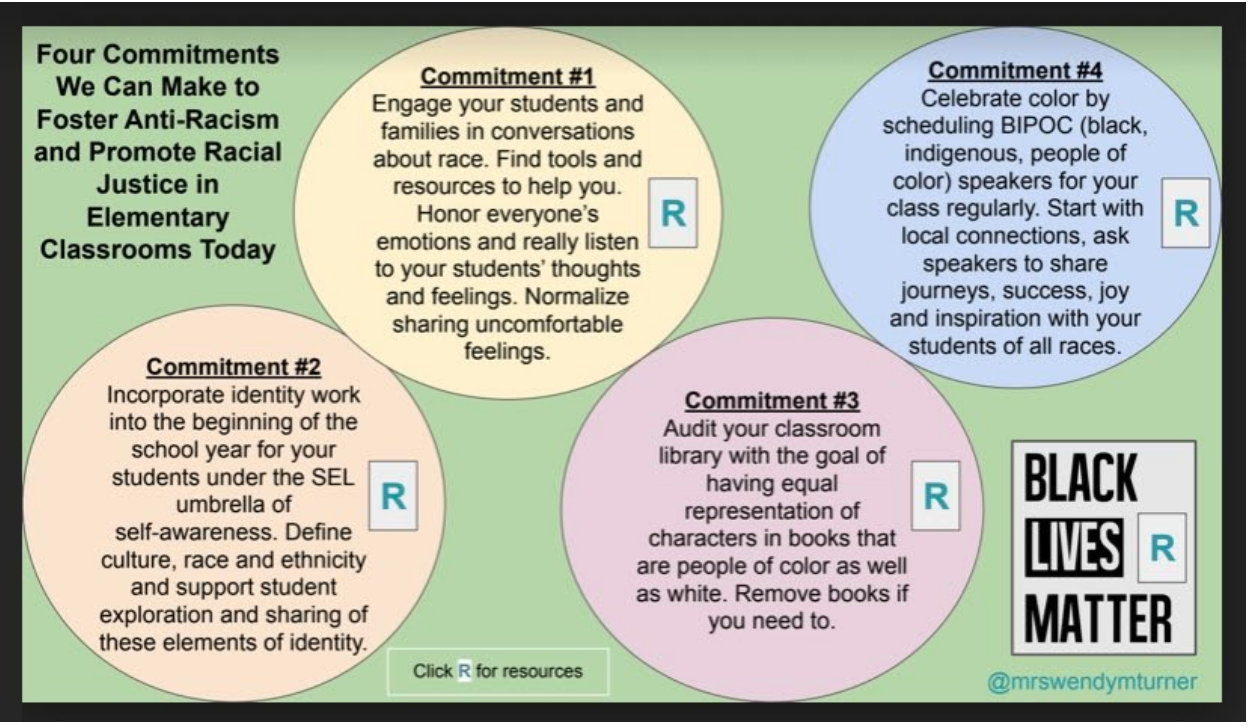I have been a teacher for 11 years and work at a large suburban public elementary school in Wilmington, Delaware. This year I started intentionally teaching my students about race more than ever before. Here’s how.
I Say The Word Race
Through deep reflection, I realized that in the past I had always taught about race with language such as “unfair treatment”, “segregation”, “protest”, and “civil rights”. All of these words belong in all of our classrooms as we create spaces to unpack and learn about our U.S. History. But a few words were missing, namely race. If we are to help our students of all backgrounds, ethnicities, and cultures understand racism, we need to say race. We must define the different racial categories and the social constructs that are part of identity in the United States of America. We also need to define racism explicitly and provide examples of racism, what it looks like, what it sounds like and also how to stand up to it. Finally, students need to know and understand the definition of someone who is a racist; a person who believes one race to be superior to another. After we watched this Social Emotional Learning video called “Appreciating Diversity” from Lessons for SEL, one of my students raised her hand and said “The questions at the end would be good questions for a racist.” I was shocked in the most wonderful ways and realized on reflection that it was the work of defining the word racist in our classroom previously that allowed this moment to happen. I have defined all of these words in my classroom this year and as a result, I notice students bringing them up freely in classroom discussions in authentic ways.
How Did I Get Here? Two experiences have led me here.
The first is my professional development and travel to South Africa as an NEA Foundation Global Learning Fellow in 2019. Through our learning and travel we learned about the deeply systematized racist policies and oppression that took place there during the Apartheid Era and the lingering effects of that system today, resulting in uneven economic power and opportunities for native South Africans. After that trip, I returned to the U.S. and vowed to never again NOT say the word race in my classroom. You can learn more about my experiences here.
The second experience was living through 2020 right here in America. So many unnecessary deaths of Black Americans at the hands of power unfolded before us. A deadly virus began to take its toll unequally in our society based on access to healthcare, housing policies, and economic opportunity. We watched all of this happen, live and uninterrupted. I listened to my Black friends experience trauma and grief in a way I did not understand. I immediately knew that as an educator and a human being, I had to change what I was doing and saying both inside and outside of my classroom. That started with saying the words race, racism, and racist and explicitly teaching their meanings and what they look like and sound like in the world today. It continued with engaging in identity work for and with my students so we could learn to appreciate differences and each other authentically. It continues with questions and thought. My job will never be done here. It is important to start somewhere. Start by saying the word race in your classroom today.
Classroom Resources: Click on pictures to access resources I have used in my 2nd grade classroom community.
Video: Diversifying Your Classroom Library
Article: The New Healthy in Schools: Emotionally Safe Space
Article: Where Am I? Working Towards Racial Justice





Leave A Comment